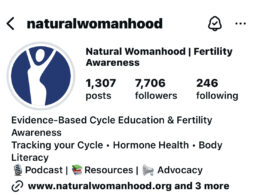Part I: When to call a doctor
The teenage years are hard enough for parents managing the ever-shifting landscape of teenage hormones, alongside newfound independence and responsibilities. Helping our teen daughters navigate period issues on top of everything else can feel downright unfair! When it comes to irregular bleeding, painful periods, or even periods that seem to have vanished, you may wonder: what could be going on? What’s more, how can you know when to get a doctor involved?
The good news is: You’ve come to the right place for answers on when to see a doctor about teens and irregular periods or teen period problems, what’s normal when it comes to teen cycles, and what you and your daughter can do about the common period issues she may be experiencing. In this first installment, we’ll look at two specific questions:
- When and why should I seek medical treatment for my daughter’s cycles?
- Why do teen cycles seem so different from adult cycles?
Later on, we’ll specifically look at suggestions for addressing some of these challenges so our daughters (and we as parents!) can navigate teen periods with more comfort and confidence.
The #1 thing that should tip you off to seek medical expertise for your teen daughter’s cycles
Over and over as I honed the content for my Pearl & Thistle pre-teen and teen education programs, pediatricians offered the same consistent refrain: symptoms which are so severe that they disrupt our daughter’s ability to function should always be brought to a doctor’s attention. Having to go home from school because of pain or heavy bleeding on the first day or even few days of a period is not normal, even if it seems common or if you experienced the same thing as a teen.
Getting medical help early is important because endometriosis, polycystic ovary syndrome (PCOS), and a number of other health issues can crop up in these teenage years. If left untreated, they have the potential to seriously impact our daughters’ quality of life and even their fertility down the road [1][2].
But what if your teen daughter is in more of a “gray area,” where her cycles aren’t disrupting her ability to function, but the unpredictability with which her period comes can be frustrating–even, in some cases, embarrassing? What if she’s also battling typical teenage acne at the same time? These are exactly the sort of reasons why many parents think it’s best to turn to hormonal birth control for the “regularity,” predictability, and skin-clearing results it promises. But let’s get down to the nitty-gritty of teen cycles now, to find out what’s normal, and what the best thing to do about it is if it’s not.
When an irregular period is normal: Teen girls’ cycles are different from adult women’s cycles
The first thing to be aware of is that there are significant differences between grown women’s cycles and the cycles that teens experience, especially within their first few years of menstruating. Parents can better equip themselves to help their daughters if they learn what unique features to look for in teen cycles to determine “normalcy.”
In the first few years of menstruation, a girl’s growing body needs time to “rehearse” the complicated processes of lining everything up to create a menstrual cycle. Her brain, pituitary glands, and ovaries need to “learn” how to talk to one another so that all the different hormones can be released at the right times [3]. This is called establishing the hypothalamic- pituitary- ovarian axis (or HPO axis). It’s like putting together a really good sports team: all the different teammates have to do their specific part well, but they also need to learn how to work together! And we know that takes time and practice. So it’s not uncommon for a girl to see highly variable cycle lengths or have “missed periods” for about the first three years of menstruating. Sometimes getting to “regularity” can take even longer.
While some of these criteria are still being debated, a typical range for periods is anywhere between 3-7 days of duration for flow [4]. Spotting days (as distinct from “flow days”) should typically be absent or minimal, limited to a single day [5]. For grown women, the average regular cycle length is between 21-35 days, but it’s not uncommon for a teen girl’s cycle to fluctuate between 21-45 days within their first few years of cycling, or to occasionally go as long as 60 days between menstrual bleeds [6],[7].
Is it a menstrual period or bleeding episode? (Yes, there’s a difference!)
In addition to variability with cycle length, during the first few years teen girls are also much more likely to have bleeds that are not true periods. These are actually the result of shifting hormones, not ovulation, and when this happens it’s called an “anovulatory cycle,” meaning “a cycle without ovulation.”
“Anovulatory cycle” is a bit of a misnomer, however, because by definition a “cycle” includes a period bleed preceded by ovulation. Anovulatory bleeds do not mark the start of a new cycle like our periods do; instead, they are hormonal events within one prolonged cycle.
In the first year after menarche (the technical term for a teen girl’s first period), more than half of her bleeding episodes may not be preceded by ovulation–a statistic which drops significantly until about the 6th or 7th year of menstruation.[8] Teens who are trained to observe biomarkers of ovulation through charting can learn how to identify these anovulatory bleeds, which may be a valuable piece of information to provide to doctors.
In the next installment, we’ll look at common issues teens face with periods, specifically heavy bleeding and pain. There may not be one magic cure-all for every period problem, but there are ways we can learn to identify issues and address them to help our daughters along the way!
Read Part II here!
References
[1] Hoeger, Kathleen M et al. Update on PCOS: Consequences, Challenges, and Guiding Treatment, The Journal of Clinical Endocrinology & Metabolism, Volume 106, Issue 3, March 2021, Pages e1071–e1083, https://doi.org/10.1210/clinem/dgaa839. [2] Agarwal SK, Chapron et al. Clinical diagnosis of endometriosis: a call to action. Am J Obstet Gynecol. 2019;220(4):354 e1- e12. doi:10.1016/j.ajog.2018.12.039 [3] Mansfield, M J, and S J Emans. “Adolescent menstrual irregularity.” The Journal of reproductive medicine vol. 29,6 (1984): 399-410. [4]Najmabadi, Shahpar et al. “Menstrual bleeding, cycle length, and follicular and luteal phase lengths in women without known subfertility: A pooled analysis of three cohorts.” Paediatric and perinatal epidemiology vol. 34,3 (2020): 318-327. doi:10.1111/ppe.12644 [5] Heitmann, Ryan J et al. “Premenstrual spotting of ≥2 days is strongly associated with histologically confirmed endometriosis in women with infertility.” American journal of obstetrics and gynecology vol. 211,4 (2014): 358.e1-6. doi:10.1016/j.ajog.2014.04.041 [6] Münster, K et al. “Length and variation in the menstrual cycle–a cross-sectional study from a Danish county.” British Journal of obstetrics and gynaecology vol. 99,5 (1992): 422-9. doi:10.1111/j.1471-0528.1992.tb13762.x [7] World Health Organization Task Force on Adolescent Reproductive Health. World Health Organization multicenter study on menstrual and ovulatory patterns in adolescent girls. II. Longitudinal study of menstrual patterns in the early postmenarcheal period, duration of bleeding episodes and menstrual cycles. J Adolesc Health Care. 1986;7:236–244. [8] Vollman, R.F. The Menstrual Cycle: Major Problems in Obstetrics and Gynecology, Vol. 7. Saunders, Philadelphia, 1977.Additional Reading:
What These Teenage Girls Didn’t Know About Their Cycles
Signs that your daughter will be getting her first period soon—and how to prepare her for it











